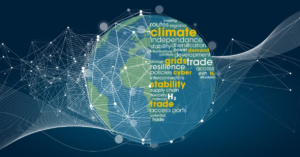The grandiose dance towards net-zero targets amidst the climate change symphony requires a shift from the old ballad of fossil fuels to the enchanting melody of sustainable and renewable alternatives. However, lurking in the shadows are the critical metals, those elusive backstage divas essential for renewable energy infrastructure and energy storage systems. China, our enigmatic gatekeeper, wields its scepter over the production dominion of critical metals. To say that China holds the key to 95 per cent of rare earths, the lifeblood of our energy transition, would be an understatement. While alternatives are being courted, the dance partners of alternative materials and recycling initiatives are, alas, slow to respond.
As we waltz through this intricate choreography, the specter of supply chain vulnerabilities and raw material prices, swayed by geopolitical winds, emerges as a formidable foe. This is evident in the technological saga of the energy storage, where lithium-ion’s price fall outpaces other solutions from grace and importantly from a funding contest.
Governments, in their attempt to orchestrate a harmonious transition, wield policies like the EU Critical Raw Materials Act and Battery Regulation. Yet, these ambitious aims may bear the unintended weight of increased production costs, threatening the very agendas they seek to propel forward.
In this grand theater, recycling emerges as a potential savior. Yet, the lingering question remains: who foots the bill for these recycling endeavors, particularly in a period of evolving technologies? Constructing a circular economy is a timely endeavor, and time is a resource we can’t afford to squander. The Intergovernmental Panel on Climate Change has emphasized the urgency of taking action by 2030 to prevent irreversible climate damage. To remain within safe climate change thresholds, carbon emissions should have peaked in 2020 and then begun decreasing at a rate of 7% annually. However, contrary to this target, emissions increased by an additional 1% in 2023. Urgency underscores the need for directing our attention towards immediate, implementable solutions.
Could technology producers, driven by the allure of boosted ESG ratings, become the unsung heroes in this recycling opera? This proactive stance is manifest in Sunwoda’s significant self-investment to establish the battery factory accompanied by a recycling facility in Hungary. This strategic move indicates a notable shift towards embracing a holistic system view of sustainability. Such an approach entails assuming responsibility for the entirety of a product’s lifecycle, a philosophy articulated by Dr. Jean-Louis Lian, Sunwoda Energy’s General Manager, during our recent discussion at the Solar Media’s Energy Storage event in London.
In conclusion, the complexities of the global supply chain demand a collaborative waltz – a dance of nations, industries, supporting policies and stakeholders, including academics. It is through this harmonious collaboration that we can aspire to embrace a holistic system action of sustainability.
— by Ionna Trofimova Elliot, Borderless Renewables

